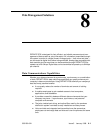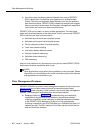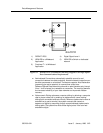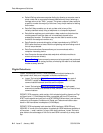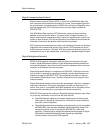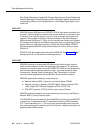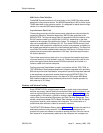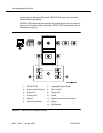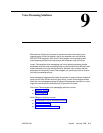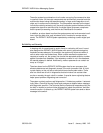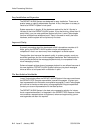
Digital Interfaces
Issue 5 January 1998
8-9555-230-024
8000-Series Data Modules
The 8400B Plus data module is a 2-wire version of the 7400B Plus data module
described in the previous section. The 8500B ExpressRoute 1000 is similar to the
7500B described on the previous section. It is designed for stand-alone configu-
rations or for use with 8500-series telephones.
Asynchronous Data Unit
The asynchronous data unit offers an economic alternative to data modules for
connecting Electronic Industries Association RS-232 data endpoints to the
DEFINITY ECS. The Asynchronous Data Unit extends the 50-foot limitation of an
RS-232 interface cable up to 40,000 feet (12,200 m), depending on the data
speed and wire gauge of the distribution system. For example, a 19.2-kbps data
rate can be supported to 2,000 feet (610 m). This allows RS-232 devices (such
as terminals, host computers, multiplexers, printers, and personal computers) to
be located great distances apart for private network applications. The Asynchro-
nous Data Unit handles standard data rates from 300 bps to 19.2 kbps and non-
standard asynchronous data rates below 1,800 bps. It provides asynchronous
full-duplex operation.
The multiple asynchronous data unit is a circuit board that contains eight asyn-
chronous data unit circuits housed in one unit. These are typically used in com-
puter-room applications where several RS-232 connections are carried in a
common cable from the host computer.
The Asynchronous Data Module is used in conjunction with the 7505, 7506, or
7507 ISDN-Basic Rate Interface telephone to support integrated voice and data.
With the Asynchronous Data Module, computers or personal computers attached
to the telephone can send and receive data through the DEFINITY ECS. The
Asynchronous Data Module mounts in the base of a 7500-series ISDN-Basic
Rate Interface telephone and provides asynchronous full-duplex operation at
data rates up to 19.2 kbps.
Modems and Modem Pooling
Since DEFINITY ECS is a digital system and many public and private network
facilities are analog, internal data communications often require modems to con-
vert from digital signals to analog signals and vice versa. Data modules, as dis-
cussed earlier in this section, provide an interface between DEFINITY ECS and
various Data Communications Equipment and Data Terminal Equipment. They
handle conversion between DCP or Basic Rate Interface and the RS-232 signal-
ling protocol used by most modems and computers. The combination of a
modem and data modules is called a conversion resource.
The DEFINITY ECS Modem-Pooling feature (Figure 8-2) eliminates the need for a
dedicated modem at every terminal. It allows conversion resources to be
grouped into pools and shared for access to analog facilities. Since the conver-
sion resource is not permanently attached to the computer, the computer can



